The U.S. Bureau of Labor Statistics (BLS) released its March Inflation report on April 10th, 2020, for the 12 months through the end of March 2020.
Annual Inflation Down Sharply
- Inflation fell sharply to 1.54% in March from 2.33% in February and 2.49% in January.
- CPI Index in February was 258.679 and fell to 258.115 in March.
- Monthly Inflation for March was -0.22%, February was 0.27% typically January through May are highly inflationary so this was VERY unusual.
- The FED has massively cranked up the “printing presses” using “Quantitative Easing” in an effort to stimulate the economy in the wake of COVID-19.
- FED Funds Rate down sharply.
- Next release May 12th
Annual inflation for the 12 months ending in March was 1.54% down sharply from February’s 2.33% and January’s 2.49%.
The CPI index itself fell to 258.115 in March from 258.678 in February creating MONTHLY deflation although there was still ANNUAL inflation.
Prices falling on a monthly basis but rising on an annual basis is called disinflation.
Currently, the inflation rate is below the FED’s target 2% rate.
Monthly Inflation:
According to the BLS commissioner’s report, “The Consumer Price Index for All Urban Consumers (CPI-U) declined 0.4 percent in March on a seasonally adjusted basis, the largest monthly decline since January 2015, the U.S. Bureau of Labor Statistics reported today. Over the last 12 months, the all items index increased 1.5 percent before seasonal adjustment.
A sharp decline in the gasoline index was a major cause of the monthly decrease in the seasonally adjusted all items index, with decreases in the indexes for airline fares, lodging away from home, and apparel also contributing. The energy index fell 5.8 percent as the gasoline index decreased 10.5 percent. The food index rose in March, increasing 0.3 percent as the food at home index rose 0.5 percent.
The index for all items less food and energy fell 0.1 percent in March, its first monthly decline since January 2010. Along with the indexes for airline fares, lodging away from home, and apparel, the index for new vehicles declined in March. The index for shelter was unchanged, with increases in the indexes for rent and for owners’ equivalent rent offsetting the aforementioned decline in the index for lodging away from home. Indexes that increased in March include medical care, used cars and trucks, motor vehicle insurance, and education. “
Seasonally Adjusted Inflation Table
From the March 2020 column in the table above we can see that on a MONTHLY seasonally adjusted basis, Energy was down -5.8%. On a Non-adjusted annual basis, however, energy was down -5.7%, over the entire year Gasoline was down -10.2% and fuel oil was down a MASSIVE -20.1%. On an annual basis, Food was up 1.9%, shelter was up 3.0%, Apparel was down -1.6% and Medical care services were up 5.5%.
Current Inflation Chart
As we can see from the chart below, throughout 2019 the inflation rate stayed within a fairly narrow range. It crossed above its 12-month moving average in November at just above 2% in November (at 2.05%) while bottoming at 1.52% in February. After rising to 2.49% in January 2020 it fell back almost to February 2019 levels in one fell swoop. For more information See Current Inflation.
 Federal Reserve Actions
Federal Reserve Actions
Throughout 2018 the FED followed a policy of “Quantitative Tightening” (QT) in addition to raising the FED Funds rate that they charge banks. This eventually crashed the stock market and the FED reversed course. Then in response to the shut down of the global economy due to the Coronavirus the FED has begun a massive reflating process. The question now is: Will the $2 Trillion COVID-19 Stimulus Cause Inflation?
FED Funds Rate
The FED stopped raising FED Funds rate in early 2019 at around 2.4%. After July, the FED lowered the FED Funds rate significantly falling from 2.40% in July to 1.55% in November. The FED halted the easing by holding the FED Funds rate steady at 1.55% from November through January raising it slightly in February to 1.58%. Effective March 3rd the FED set its target range at 1%- 1.25% but actually lowered it even further to 0.65% by the end of March. Big Banks are speculating that the FED will end up lowering rates to zero by year-end.
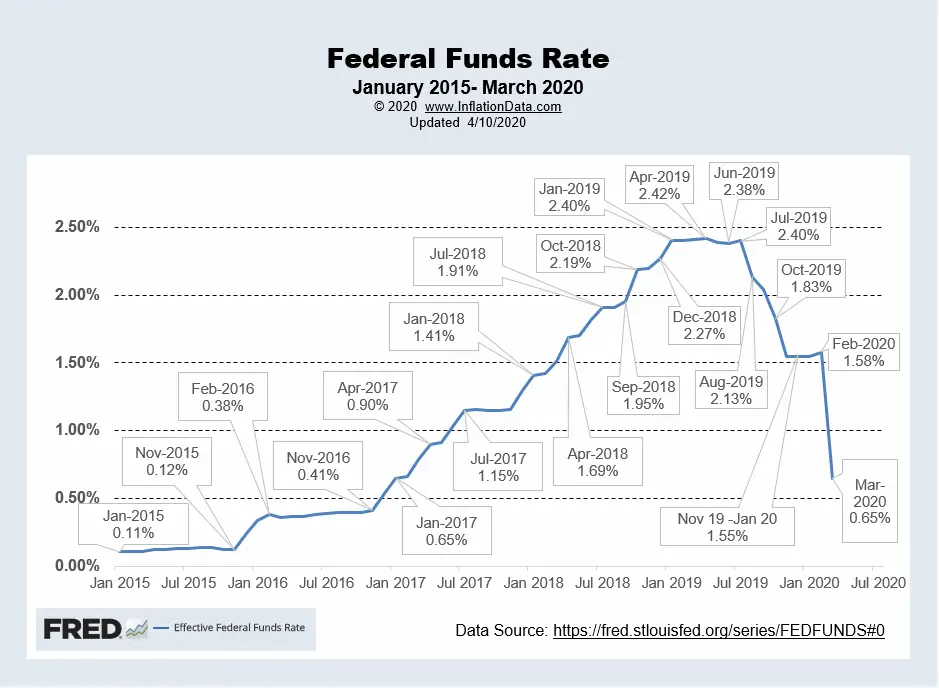 For more info See NYSE ROC and MIP.
For more info See NYSE ROC and MIP.
Inflation Forecast
The monthly inflation rate for February was a typical 0.27% but lower energy prices drove March’s monthly inflation rate down to -0.22%. Typically March is one of the most inflationary months of the year, so this is very rare. The last time we had negative monthly inflation in a March month was in 1982 and 1986. Prior to that, we have to go all the way back to 1948 to find one.
See our Moore Inflation Predictor to see our current projections.
Not Seasonally Adjusted Monthly Inflation Rates
| Jan | Feb | Mar | Apr | May | Jun | Jul | Aug | Sep | Oct | Nov | Dec | |
| 2016 | 0.17% | 0.08% | 0.43% | 0.47% | 0.41% | 0.33% | (0.16%) | 0.09% | 0.24% | 0.12% | (0.16%) | 0.03% |
| 2017 | 0.58% | 0.31% | 0.08% | 0.30% | 0.09% | 0.09% | (0.07%) | 0.30% | 0.53% | (0.06%) | 0.00% | (0.06%) |
| 2018 | 0.54% | 0.45% | 0.23% | 0.40% | 0.42% | 0.16% | 0.01% | 0.06% | 0.12% | 0.18% | (0.33%) | (0.32%) |
| 2019 | 0.19% | 0.42% | 0.56% | 0.53% | 0.21% | 0.02% | 0.17% | (0.01%) | 0.08% | 0.23% | (0.05%) | (0.09%) |
| 2020 | 0.39% | 0.27% | (0.22%) |
See: Monthly Inflation Rate for more information and a complete table of Unadjusted Monthly Rates.
Misery Index
Currently, the Misery Index is at 5.94% based on 4.4% unemployment and 1.54% inflation. This is not significantly different from last month’s 5.83% although Unemployment is much higher and inflation is much lower. This is still below the 6.09% in January, but above the 5.79% in December, 5.55 in November, and 5.36% in October.
[Read More…]
NYSE Rate of Change (ROC)©
Sell Signal
After passing a milestone of doubling since the September 2011 low (up 108.8%) the market has been panicked into a massive “correction” by a combination of the CoronaVirus (COVID-19) and falling oil prices. On Thursday, April 10th the S&P 500 gained 2.1 percent by the close bringing the NYSE back up to 11,136.61 “only” down 13.59% from year-ago levels. This resulted in an 8.7% gain for the week so far. The ROC remains in sell territory crossing below its moving average and below the zero line.
See the NYSE ROC for more info.
NASDAQ Rate of Change (ROC)©
Sell Signal!
The NASDAQ ROC crossed sharply through its moving average generating a sell signal. However, unlike the NYSE ROC it has not crossed below the zero-line. The market was in freefall panic mode because of a combination of falling oil prices and the Corona Virus. However, in the last week, it has rebounded from an open on Monday of 7,660 to 8,153 as of the close on Thursday.
See NASDAQ ROC for more.
Regional Inflation Information
The U.S. Bureau of Labor Statistics also produces regional data. So if you are interested in more localized inflation information you can find it here.
| AL | AK | AR | AZ | CA | CT | CO | DC | DE | FL | GA | GU | HI | IA |
| ID | IL | IN | KS | KY | LA | MA | MD | ME | MI | MN | MO | MS | MT |
| NC | ND | NE | NH | NJ | NM | NV | NY | OH | OK | OR | PA | PR | RI |
| SC | SC | SD | TX | UT | VA | VI | VT | WI | WA | WI | WV |
You Might Also Like:
From InflationData.com
- Fed Stimulus Packages and Uncertain Inflationary Prospects
- What is the Federal Funds Rate?
- Will the $2 Trillion Covid-19 Stimulus Cause Inflation?
- Does the FED Control Mortgage Rates?
Read more on UnemploymentData.com.
- Coronavirus Skyrockets March Unemployment
- Essential Jobs That Are in High Demand During Emergencies
- Dealing With Temporary Disability After a Workplace Injury
- 8 Reasons Why You Should Pursue Higher Education (Now!)
- Benefits of Working with a Staffing Agency
From Financial Trend Forecaster
- Saudi Arabia’s Oil Price War Is Backfiring
- Electricity Rates by State
- Oil Is Now More Volatile Than Bitcoin
- Financial Real Estate Trends Investors Should Understand for 2020
- Gold is Still King of the Investing Market
From Elliott Wave University
- Crude Oil’s 2020 Crash: See What Helped (Some) Traders Pivot Just in Time
- Stocks: Is the Worst Over or is there Worse Yet to Come?
- Junk Bonds: 2 “Golden” Junctures
- Is the Buying Opportunity Here Yet?
- Did the Oil Crash Wreck the Stock Market?
From OptioMoney.com
- Learning to Trade from Video Tutorials
- How Saxo Bank Democratizes Trading and Investment
- Five Business Tips to Help Your Company Thrive
- Have Minimal Car Insurance? What to Do in Case of an Accident
- How to Choose a Residential Roofing Contractor
From Your Family Finances
- 4 Signs You’re Financially Ready to Buy a Home
- Things You Should Know When Investing During Your Retirement Years
- Check Yourself: 4 Reasons You Still Need a Checking Account
- How to Handle the Associated Expenses of a Car Accident
- What You Need to Know about Different Types of Homeowners Insurance

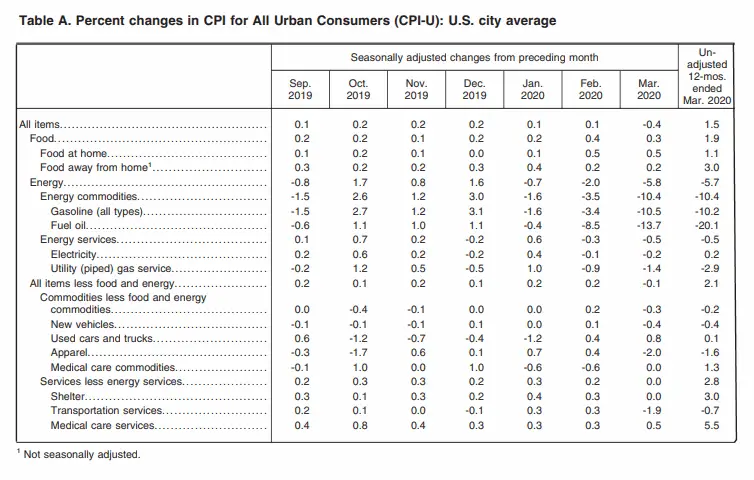
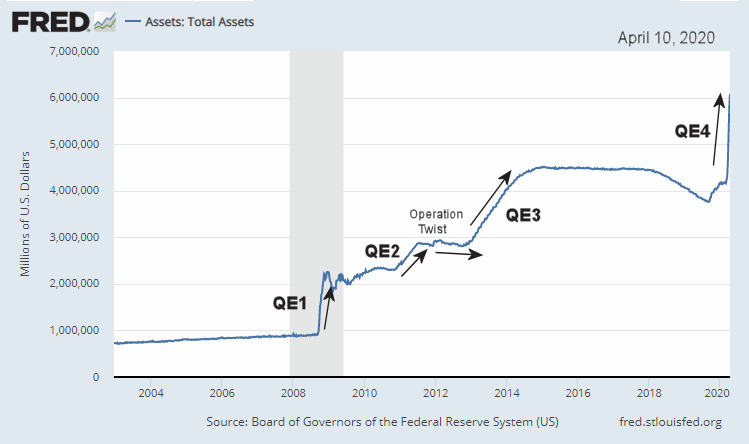
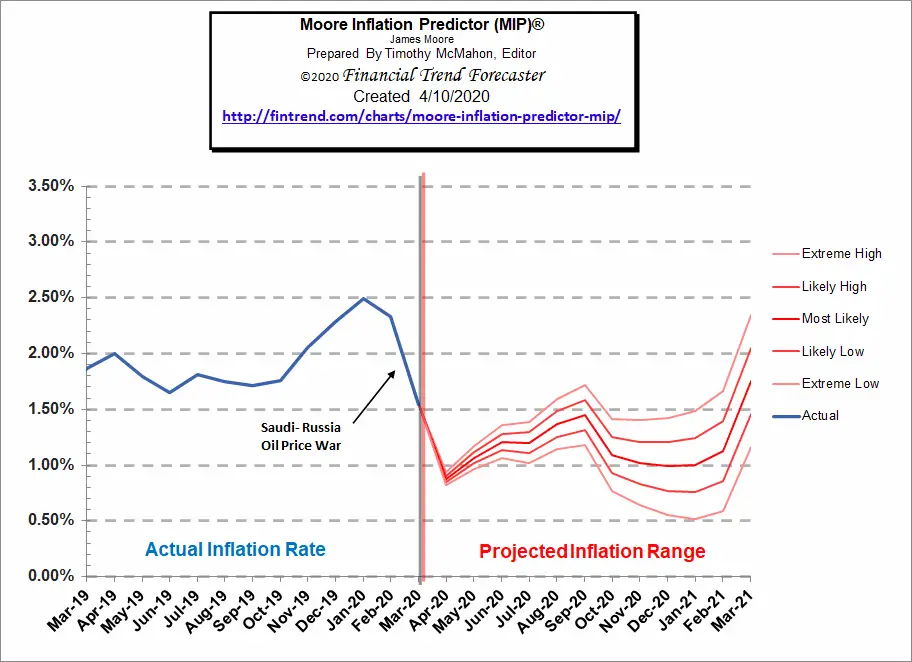
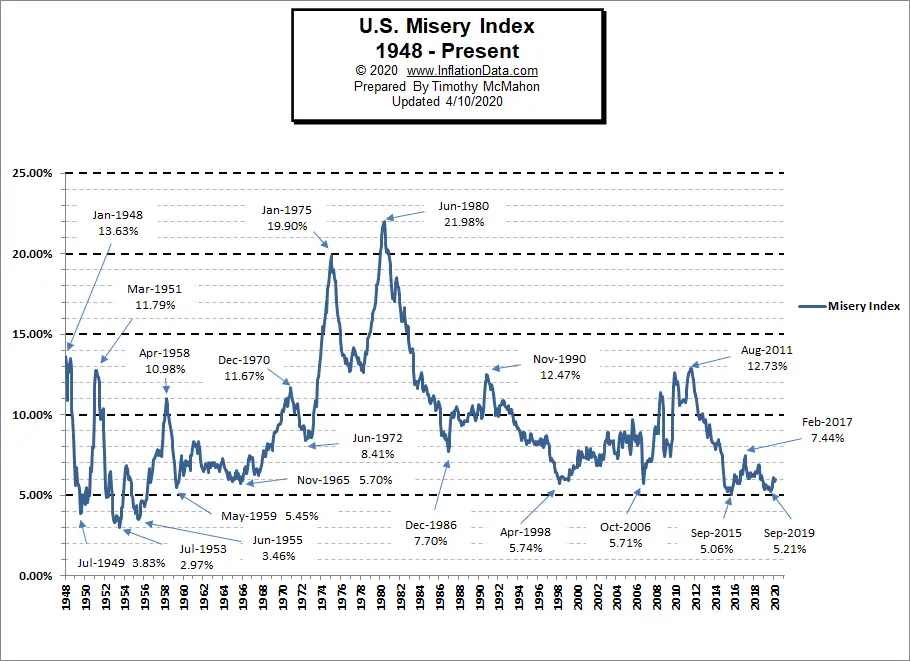
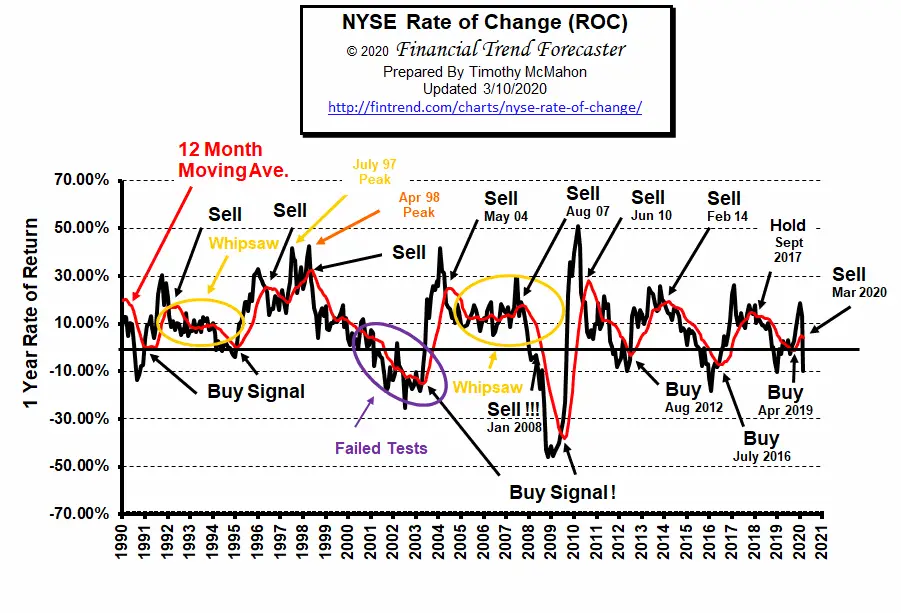
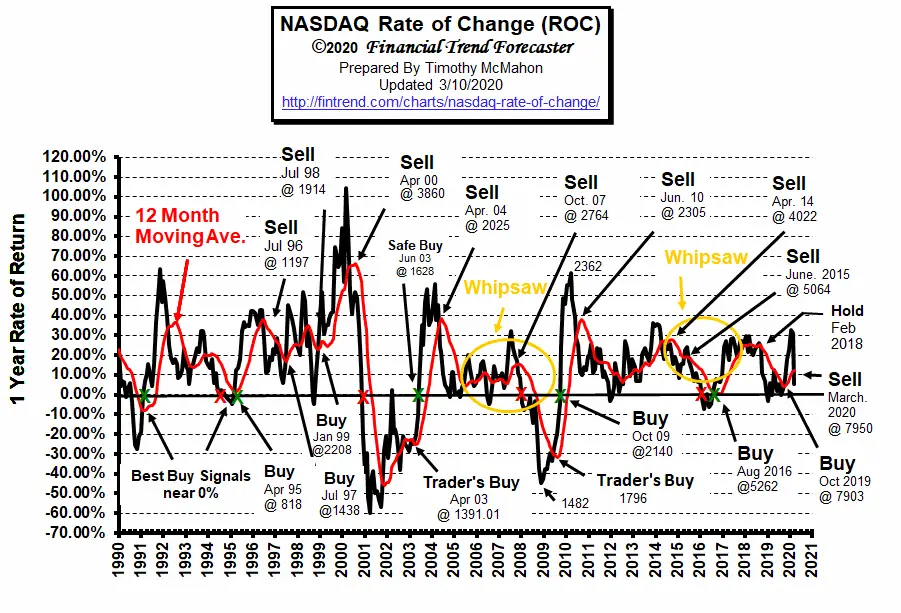

Leave a Reply